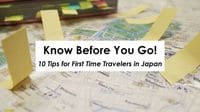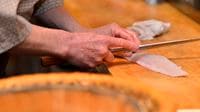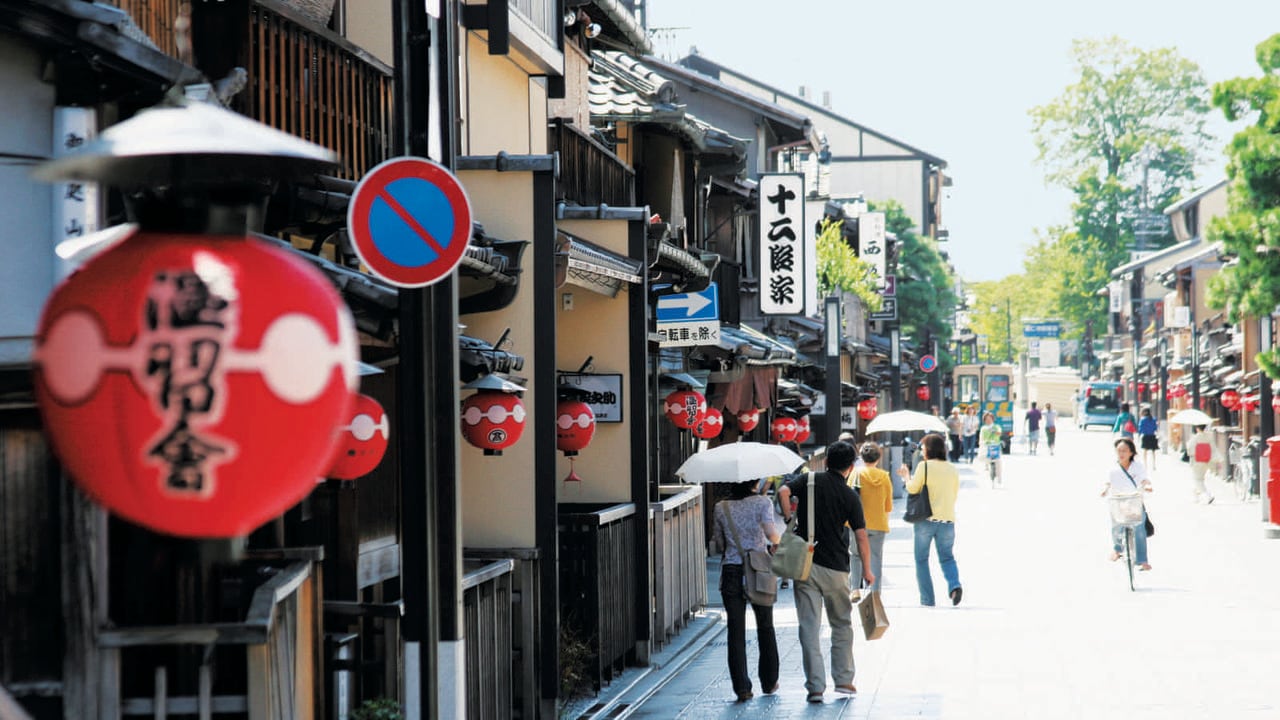
It's easy to spend an entire day exploring the beautiful area known as Higashiyama. To give you an idea of where to start, here is a one-day walking tour that will take you to some of the area's iconic shrines, temples, and neighborhoods. You'll end your day in the geisha district of Gion. Should you be interested, there are also opportunities to try dressing up like a maiko or take in a show featuring several of Japan’s famous art forms.
Kiyomizu-dera Temple
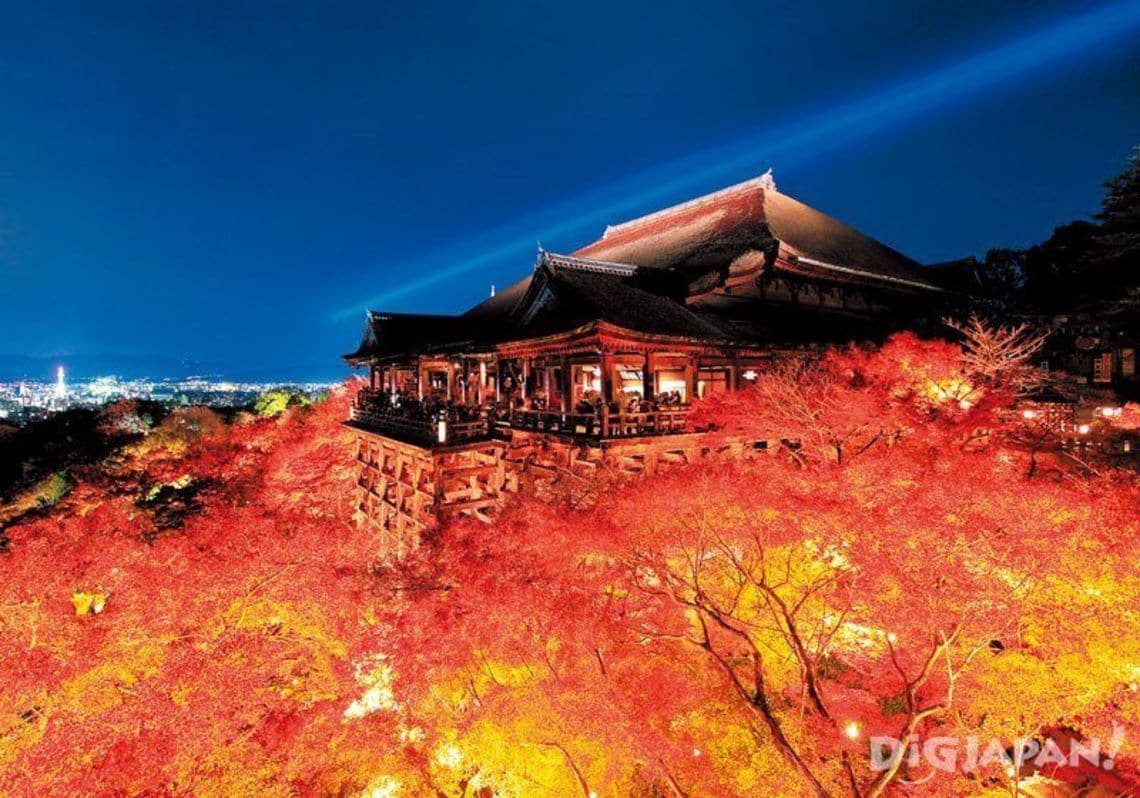
A great place to begin a day in Higashiyama is Kiyomizu-dera, a World Heritage Site with more than 1,200 years of history. Assuming you’re starting your day from Kyoto Station, you’ll want to take either the No. 206 bus bound for Kitaoji bus terminal via Higashiyama-dori or the No. 100 bus bound for Ginkaku-ji via Kiyomizu-dera Gion. Get off at the Gojozaka stop and walk east for about 10 minutes to reach the temple.
While there is much to see here, there are two areas of this temple in particular that are well worth a visit. First is Kiyomizu Stage, a balcony that hangs over an impressive cliff. Amazingly, this nearly four-story tall balcony was constructed without a single nail using a technique known as kake-zukuri. While lovely any time of year, the view of the trees is particularly stunning during the fall or when dotted with sakura in the spring. There are also illumination events at various times of the year.
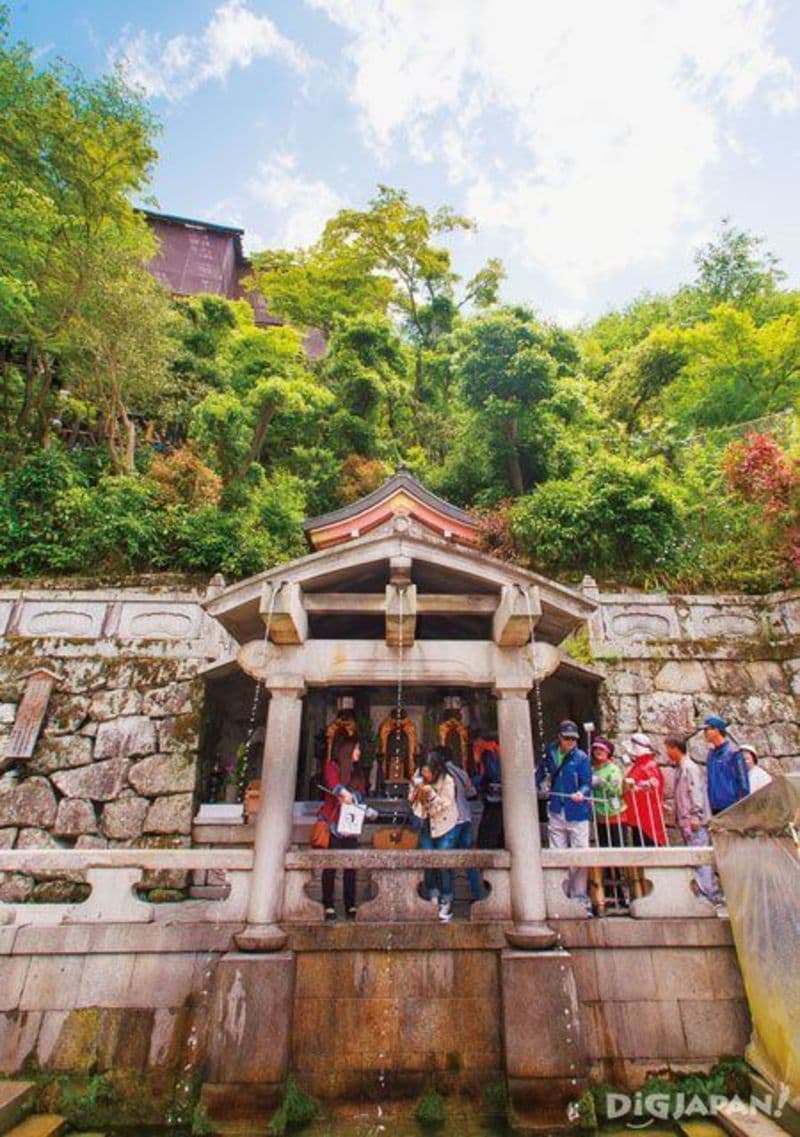
Next is Otowa Waterfall. Located just below the Honden or main shrine, these waters were believed to be sacred and capable of passing on blessings to those who drank from the falls. It is held now that each of the three streams of the waterfall has its own unique blessing: one for academic success, one for good luck in love and romance, and one for good health.
Address: 1-294 Kiyomizu, Higashiyama-ku, Kyoto-shi, Kyoto
Hours: 6:00am~6:00pm
※Hours may change seasonally.
Entrance fee: 400 yen
Website: http://www.kiyomizudera.or.jp/en/
Jishu-jinja Shrine
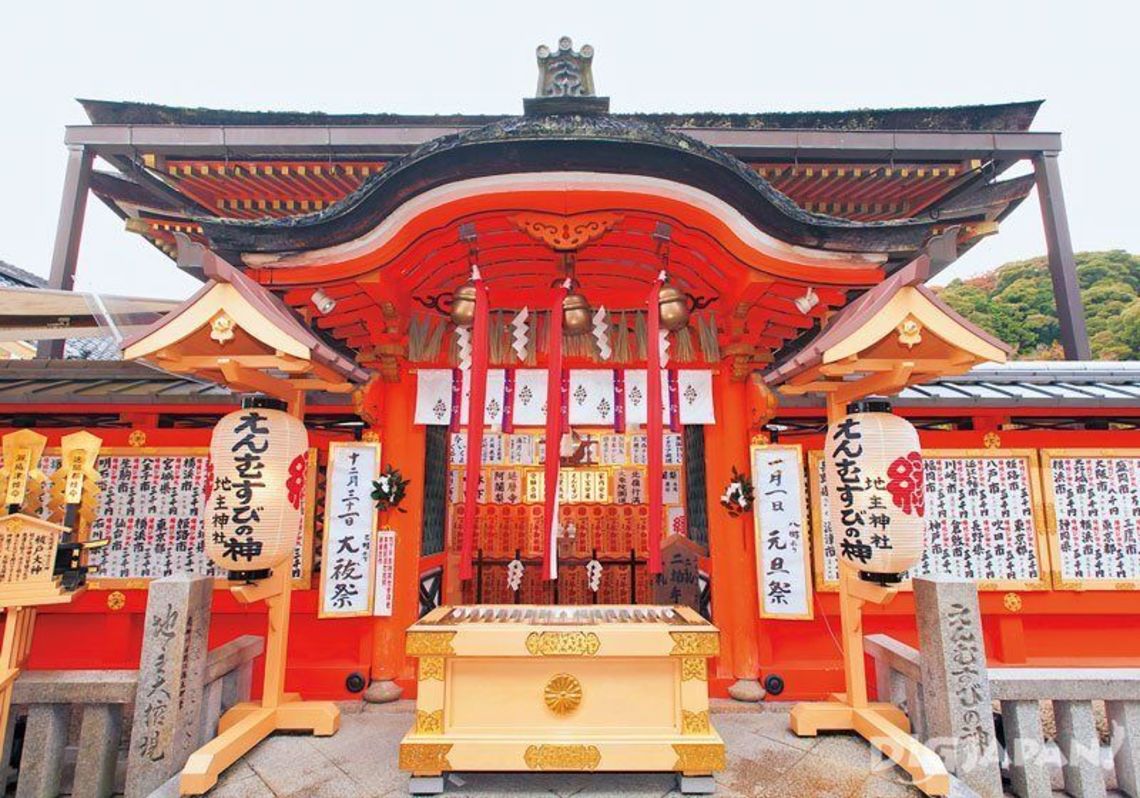
Because Buddhism and Shinto are syncretized in Japan, it’s not uncommon to find shrines inside Buddhist temples and vice versa. Kiyomizu-dera is no exception. Jishu-jinja is a particularly famous shrine located inside Kiyomizu-dera. One of the main draws of this shrine is the "Love Fortunetelling Stones." Located about 10 meters apart from each other, it’s said that anyone who can successfully walk eyes-closed from one stone to the other will be successful in love. The shrine also sells a variety of unique love charms ranging from those for finding your true love to those for deepening an existing relationship.
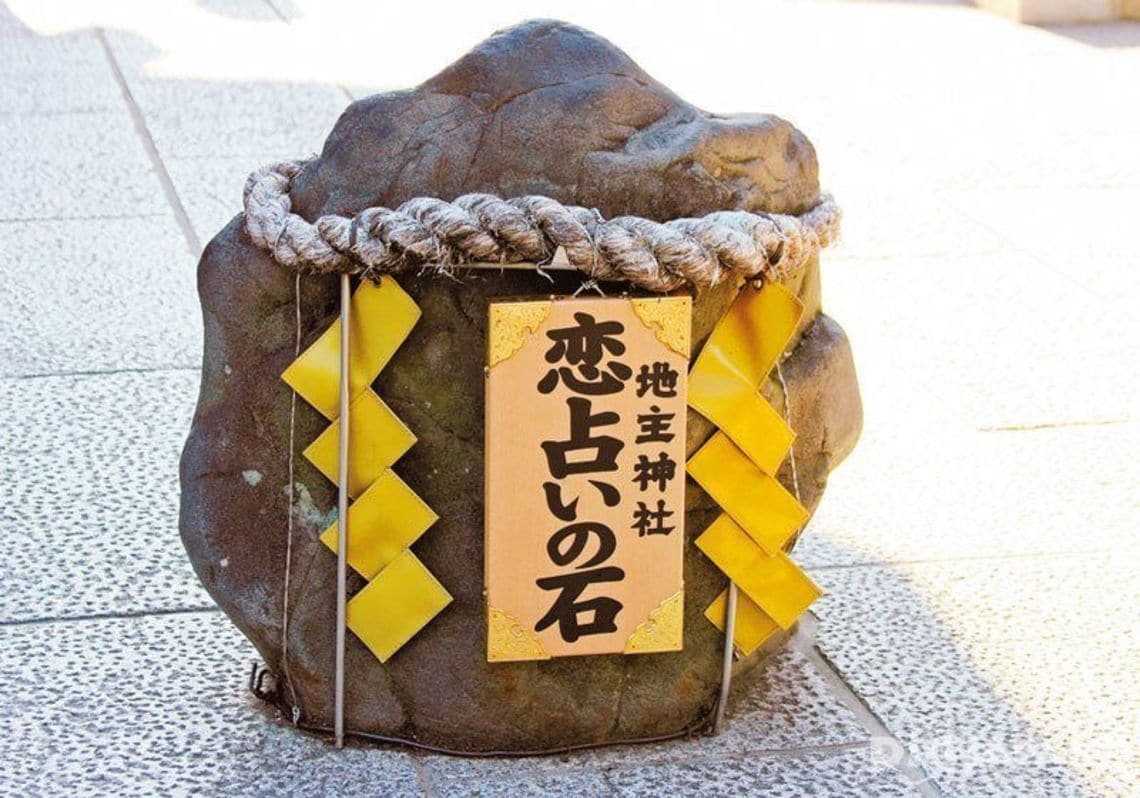
Address: 1-317 Kiyomizu, Higashiyama-ku, Kyoto-shi, Kyoto
Hours: 9:00am~5:00pm
Entrance fee: free*
*You must pay the entrance fee for Kiyomizu-dera to enter Jishu-jinja.
Ninenzaka and Sannenzaka
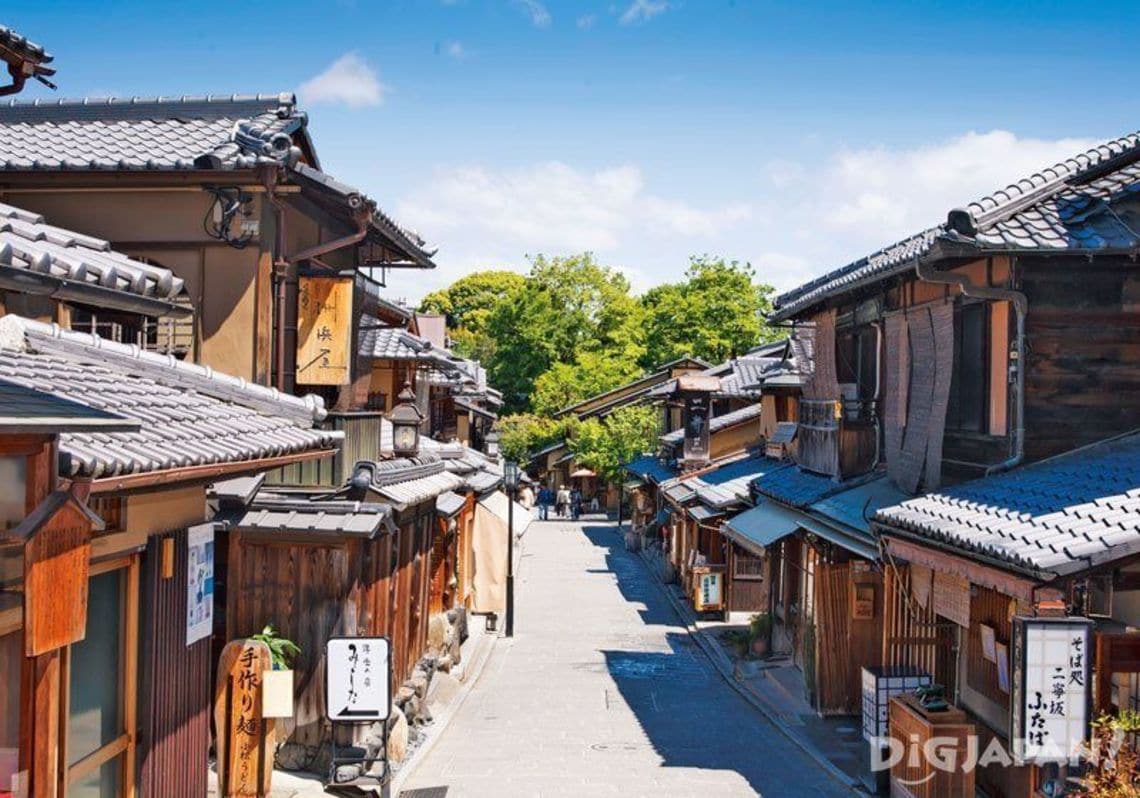
Located at the foot of the mountains and slightly to the north of Kiyomizu-dera are Ninenzaka and Sannenzaka. These historic streets are some of the best preserved in Kyoto. The stoned-paved streets are lined with lovely wooden stores selling everything from delicious Kyoto specialties to fine souvenir goods. There are also numerous cafes and restaurants should you feel like taking a break with a bite to eat or something to drink.
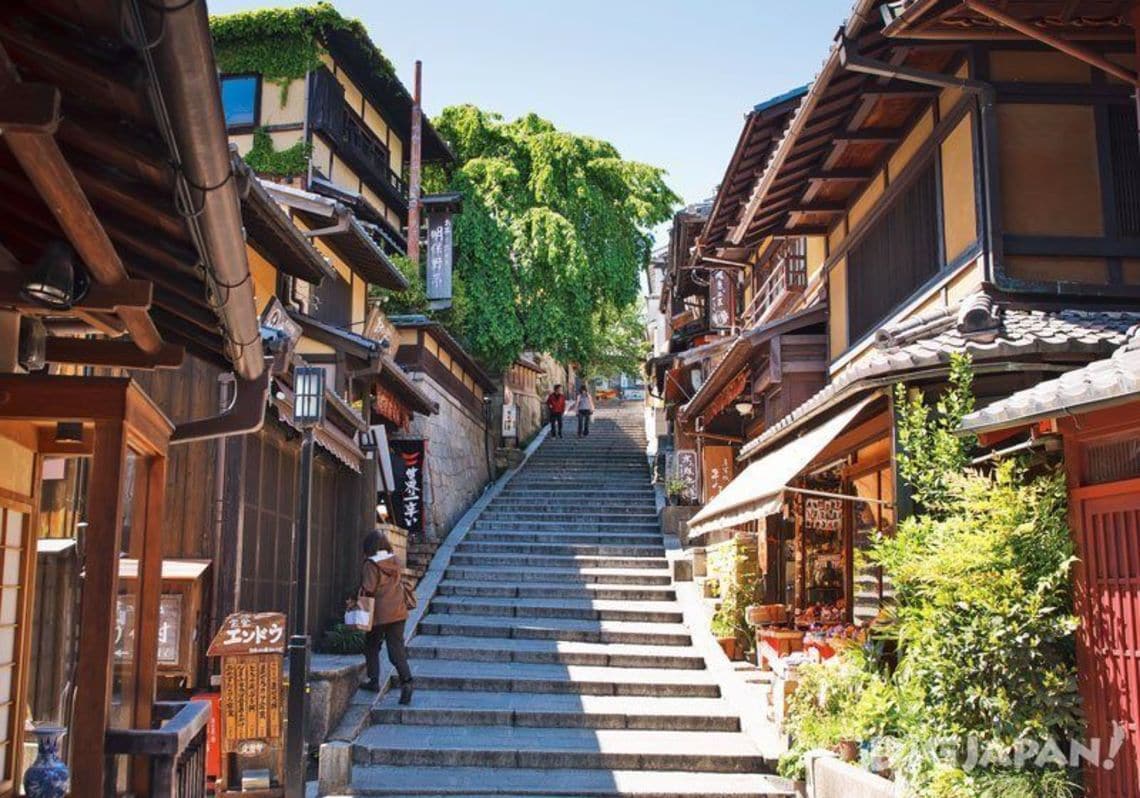
Option: Maiko Henshin Experience
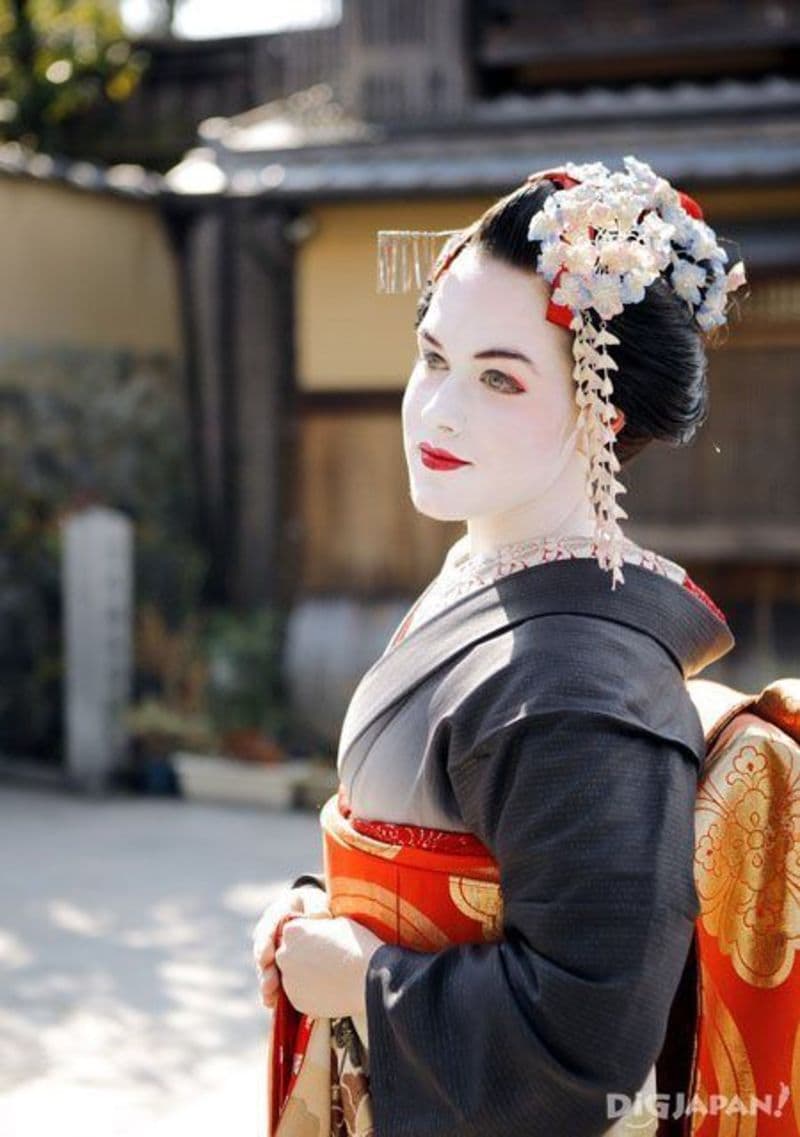
If you want to know more about the world of maiko and geiko (Kyoto dialect for geisha), why not start by experiencing what it’s like to wear their costume and makeup? There are several studios that offer a service known as maiko henshin-- literally maiko transformation. One example is Maiko Henshin Studio Shiki. You can see what the experience is like here!
Yasaka Pagoda
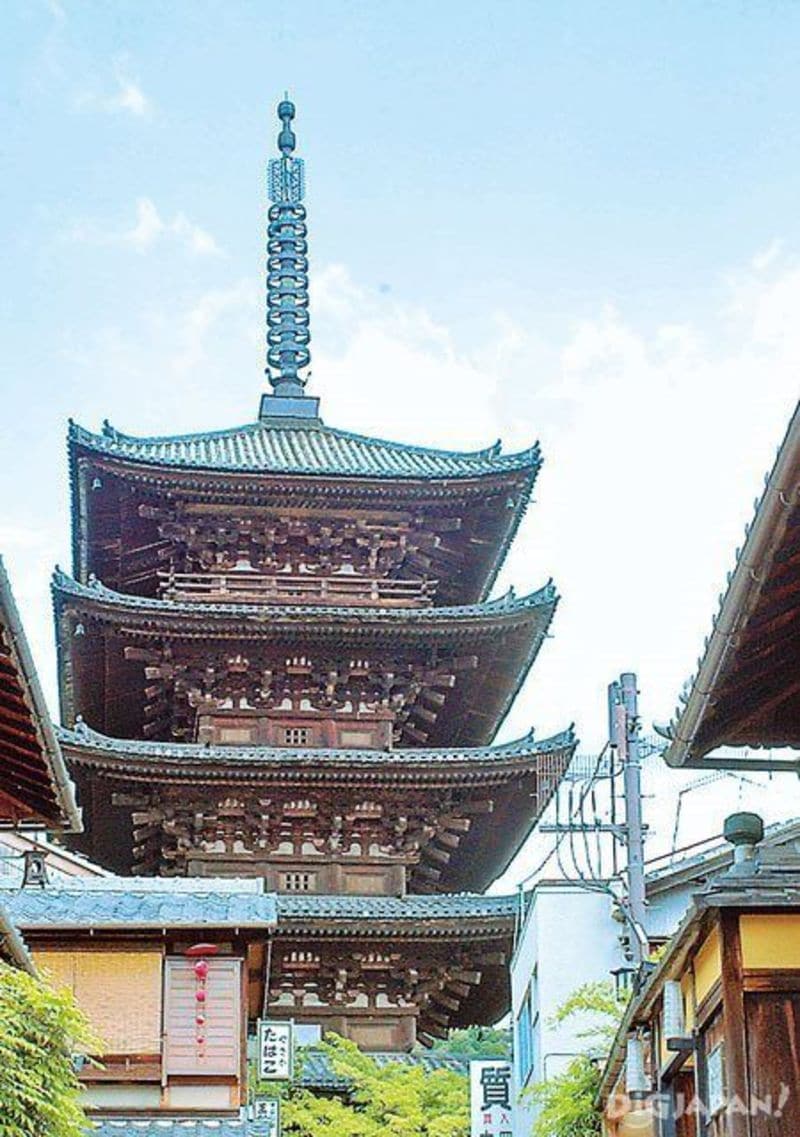
Located slightly to the east of Ninenzaka is the five-story Yasaka Pagoda. A symbol of the Higashiyama area, this impressive pagoda stands at 46m (approx. 150ft.) tall.
Information
Address: 388 Yasaka Kamimachi, Higashiyama-ku, Kyoto-shi, Kyoto
Yasaka Koshindo
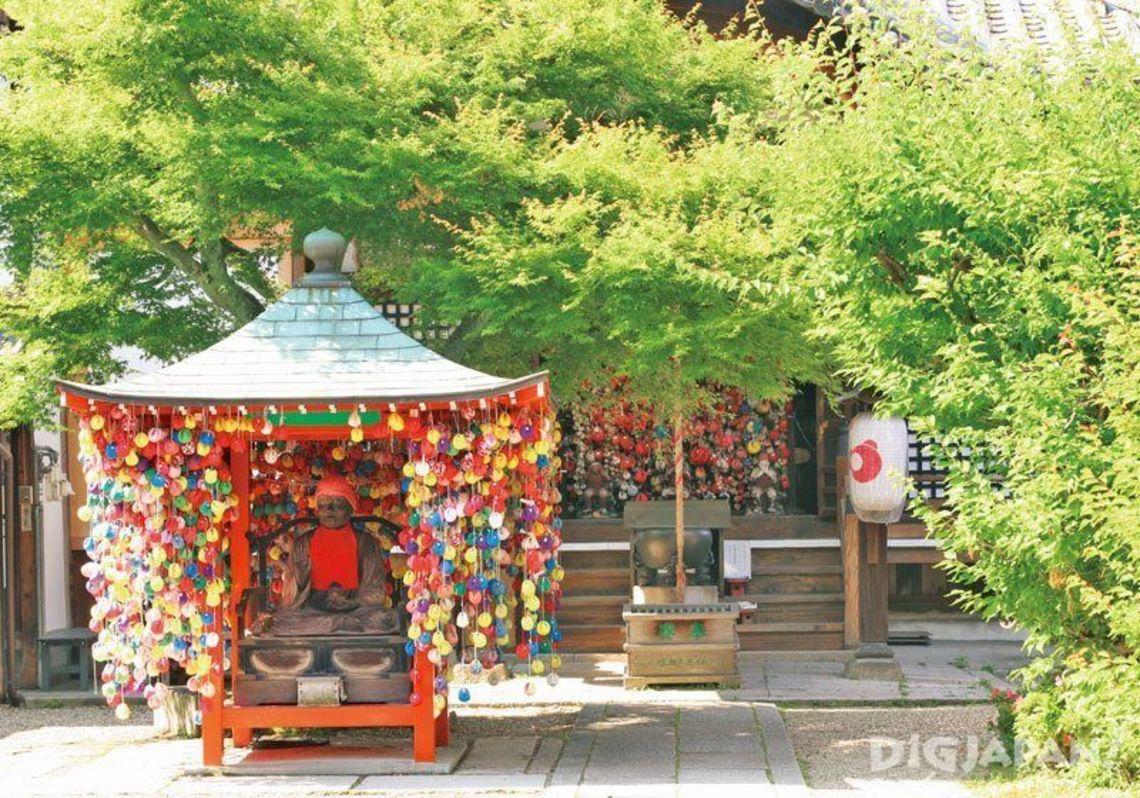
Just across the street from the pagoda is a colorful shrine called Yasaka Koshindo. Built in the Heian Period, this is said to be the oldest sacred place of Koshin-shinko, a folk faith of Japan. It is well known for its many strings of kukuri-zaru, little "monkeys" with their hands and feet tied together. Visitors to this shrine can leave their desires tied up with these monkeys in order for their wishes to come true.
Address: 390 Kinen-cho, Higashiyama-ku, Kyoto-shi, Kyoto
Hours: 9:00am~5:00pm
Entrance fee: free
Nene no Michi and Kodai-ji Temple
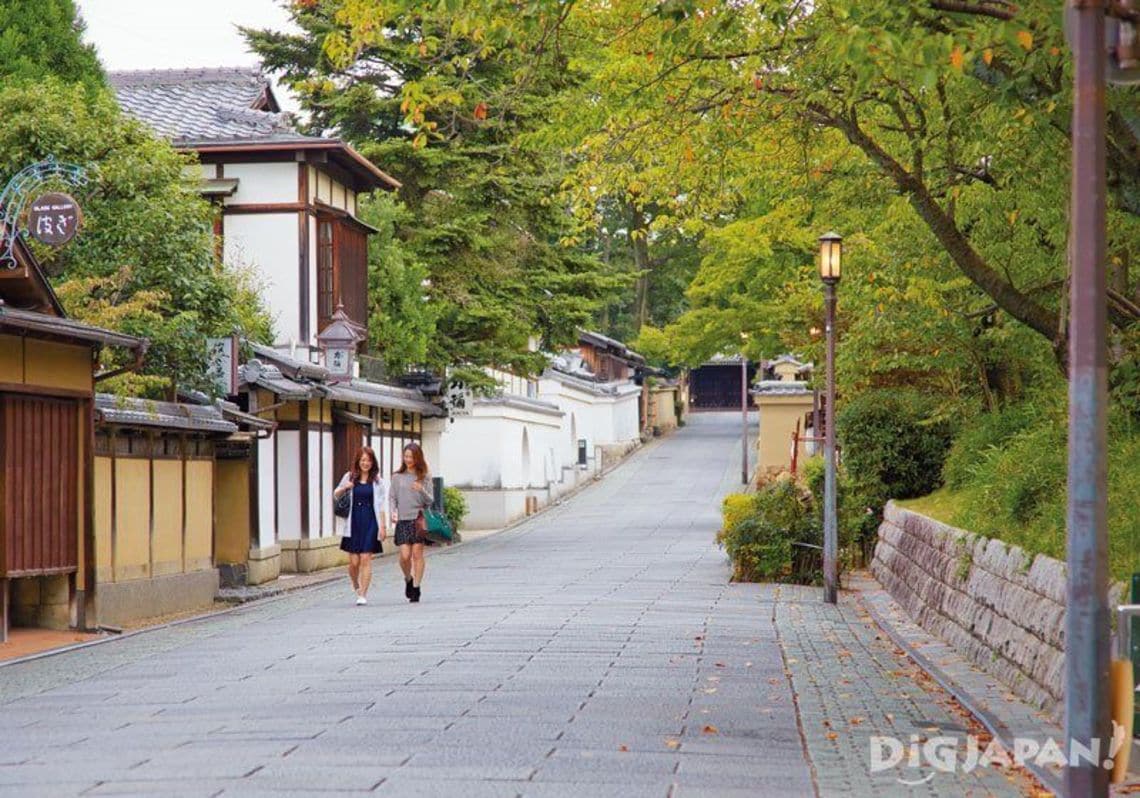
Head further north and you’ll arrive at Nene no Michi, or the path of Nene. This street is named for Nene, the wife of Toyotomi Hideyoshi. As with Ninenzaka and Sannenzaka, you’ll find many beautiful stores selling a variety of goods. Following this street will take you past the west side of Kodai-ji Temple. This temple was established at the behest of Nene in memory of her husband. Both she and Toyotomi are enshrined here. There are special illuminations held at the temple in the spring, summer, and autumn months.
Address: 526 Shimokawara-cho, Kodai-ji, Higashiyama-ku, Kyoto-shi, Kyoto
Hours: 9:00am~5:00pm
Entrance fee: 600 yen
Illumination events are held here occasionally throughout the year from sunset to 10:00pm (last entry 9:30pm).
Maruyama Park
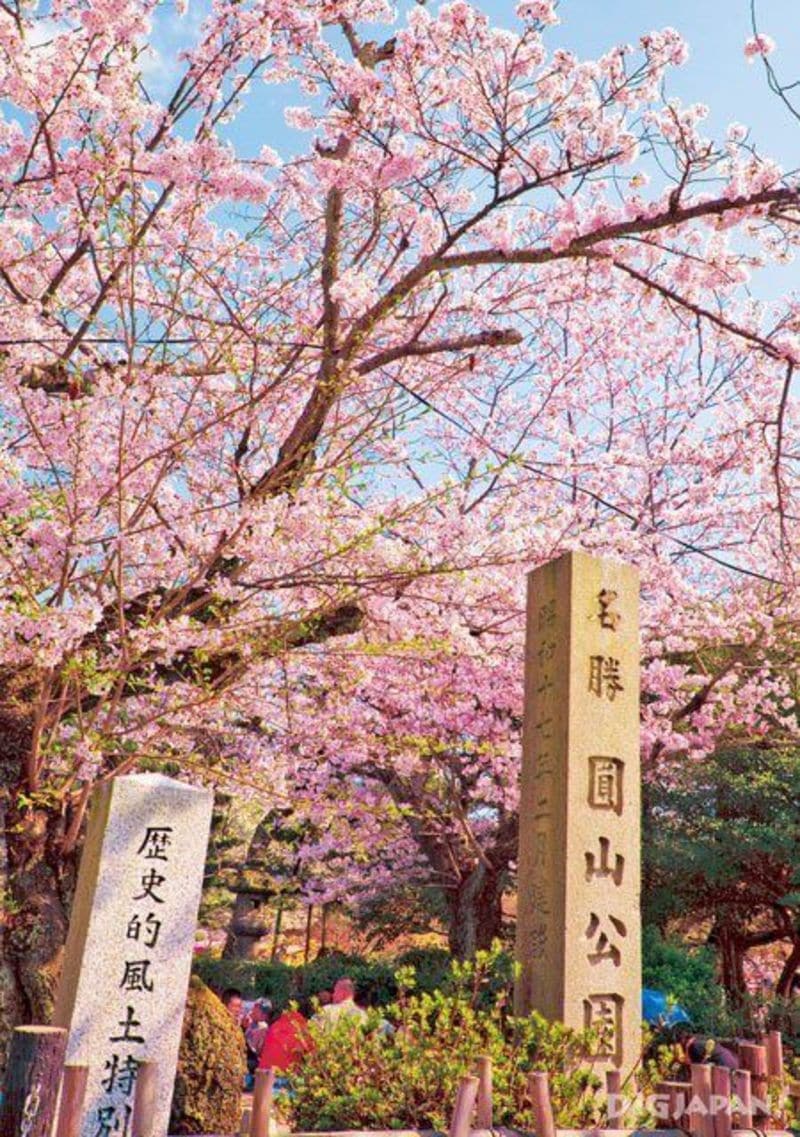
Continue along Nene no Michi, and you’ll reach Maruyama Park. This is a public park located beside Yasaka-jinja Shrine. It's famous as one of Kyoto’s most popular sakura viewing spots. The star attraction is a shidarezakura weeping cherry tree. The tree is lit up during the cherry blossom season from sunset until 1am from around mid-March to mid-April.
If you visit in the spring, feel free to pull up a bit of blue tarp (called “leisure sheets”) with food and drink of your choice and take part in Japan’s hanami (cherry blossom viewing) culture! (P.S. the consumption of alcohol is permitted inside Murayama Park. Please remember to drink responsibly, and that the drinking age in Japan is 20!)
Address: 473 Maruyama-cho, Higashiyama-ku, Kyoto-shi, Kyoto
Park is open twenty-four hours.
Yasaka-jinja Shrine
You can enter Yasaka-jinja through Maruyama Park. Yasaka-jinja is an important presence in Gion. In fact, it was called Gion-jinja or Gion Shrine up until the Meiji Restoration. Yasaka-jinja holds the Gion Matsuri, a festival with a history of more than a thousand years. This incredible event spans nearly the entire month of July. On your way out of the shrine onto Shijo-dori Street, be sure to check out Yasaka-jinja's brilliant romon gate and komainu-- lion dogs that protect the shrine.
Address: 625 Gion-machi Kitagawa, Higashiyama-ku, Kyoto-shi, Kyoto
Shrine is open twenty-four hours.
Utsukushii Gozen-sha
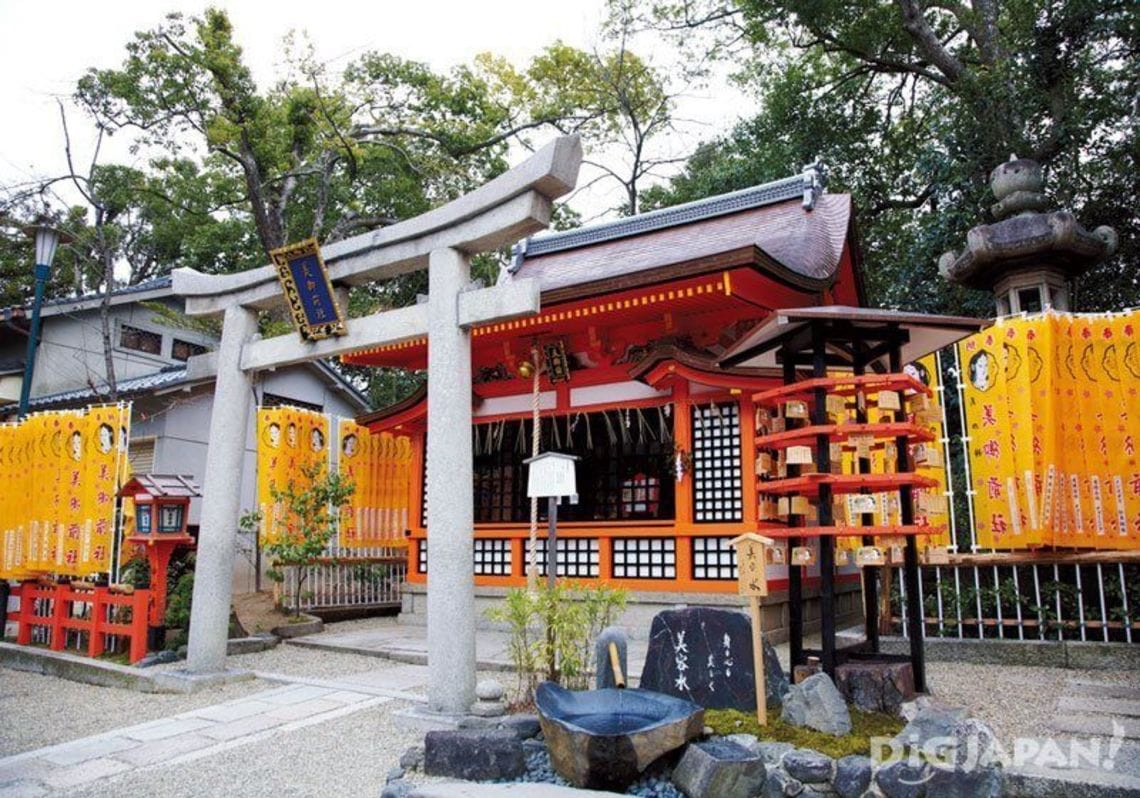
Inside Yasaka-jinja, you’ll also find a smaller but no less popular shrine called Utsukushii Gozen-sha. The goriyaku or blessing of this shrine is said to be both physical beauty and beauty / purity of heart. The water that flows here is said to beautify both appearance and heart, so feel free to pat some on. Just keep in mind that unlike the water at Kiyomizu-dera, this is not for drinking. It is said that many geiko and maiko also frequent this shrine.
Shrine is open twenty-four hours.
Hanamikoji-dori Street
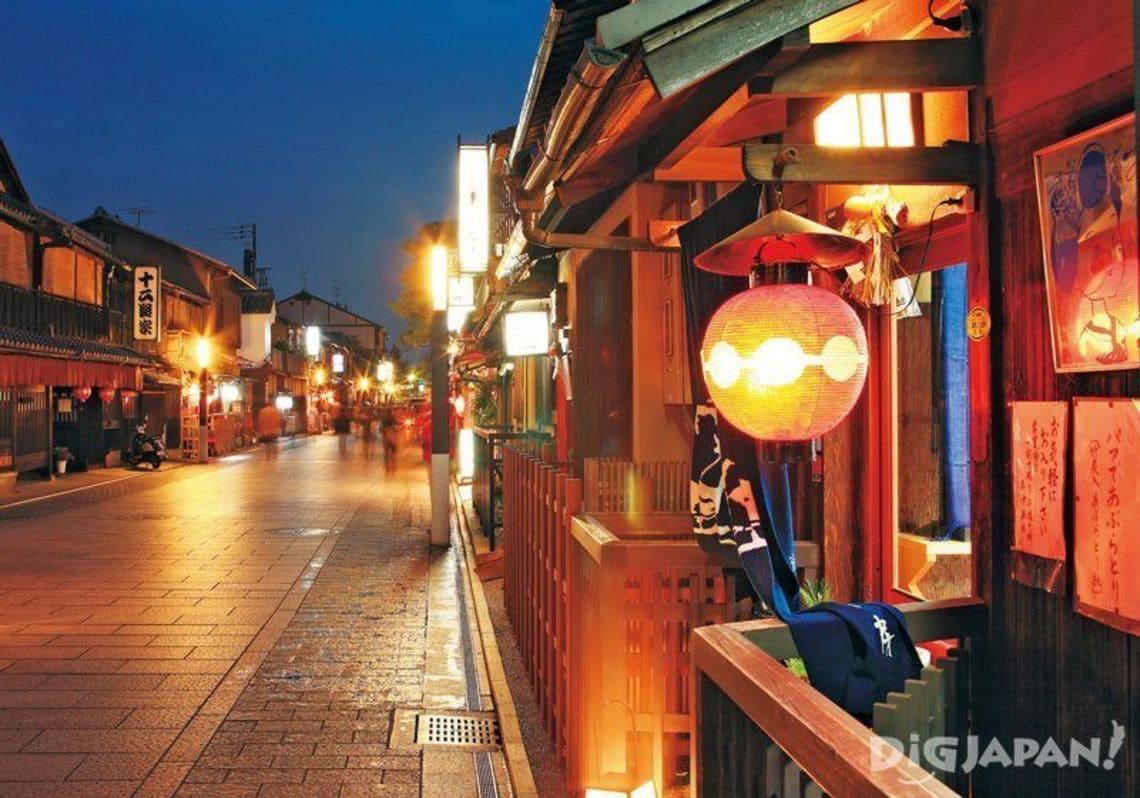
Next, head to Hanamikoji-dori. The most notable features of this street are the many okiya, places where geisha and maiko live. Also here is the Gion Kaikan, the theatre in which Gion’s maiko and geiko perform the Miyako Odori every year in April. Tickets are required for the event and can be purchased here.
Maiko Spotting
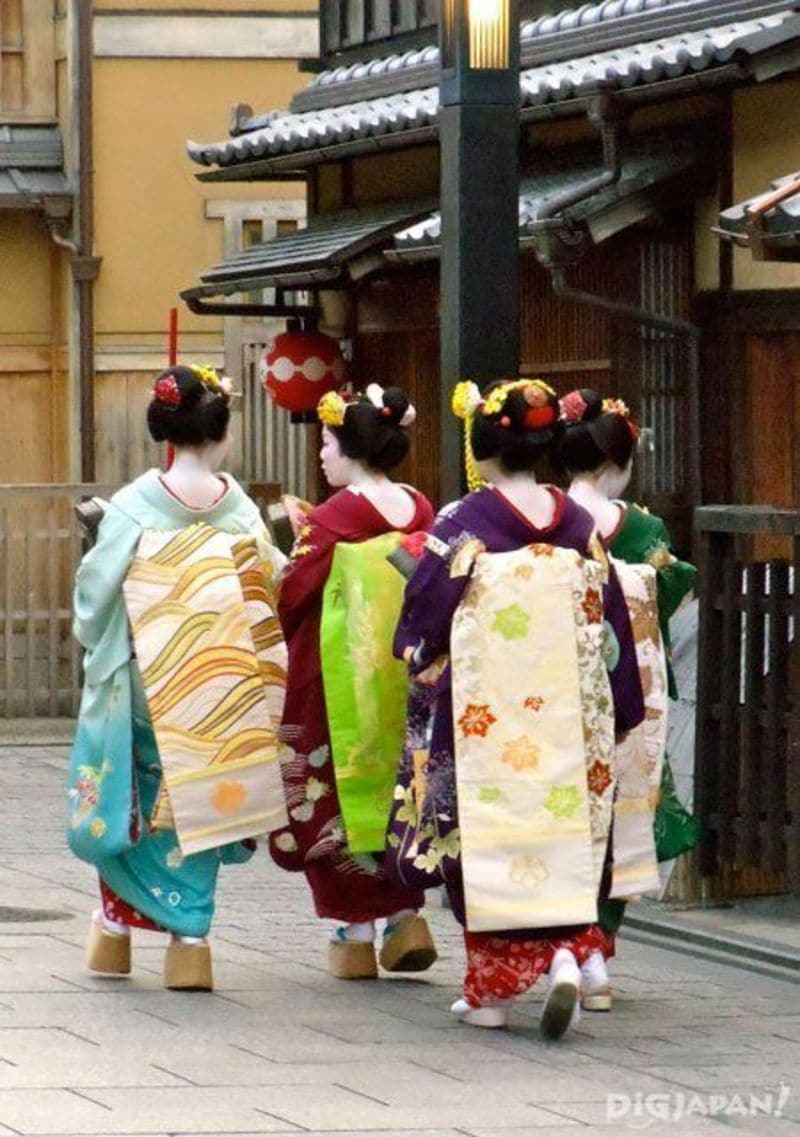
Lastly, with some luck you may be able to see maiko on their way to engagements in the early evening on Hanamikoji-dori. While the urge to take as many pictures of them as possible is understandable, please remember to be respectful and take pictures from a reasonable distance.
Option: Gion Corner
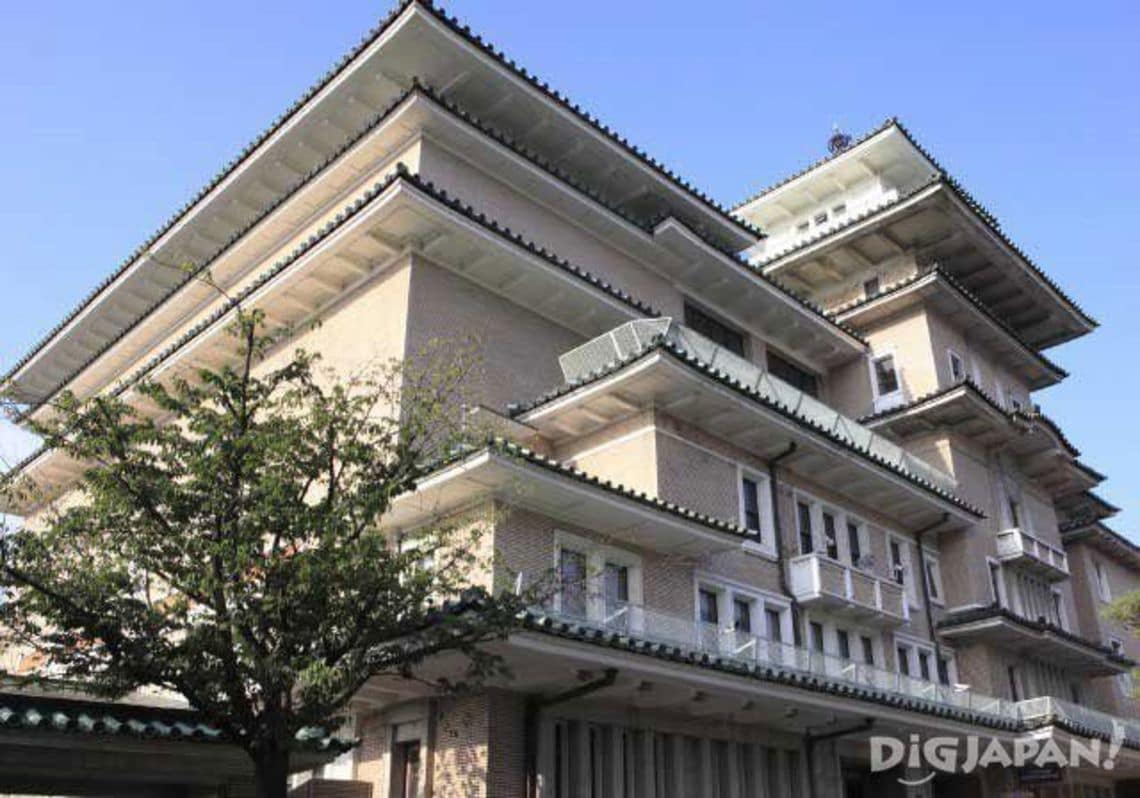
If you’re interested in checking out digest versions of several Japanese art forms including dances by maiko, bunraku puppetry, tea ceremony, and more, then stop by Gion Corner inside Yasaka Hall at 6pm or 7pm to take in a show. You can learn more about Gion Corner here.
Information
Address: Yasaka Hall, 570-2 Gion-machi Minamigawa, Higashiyama-ku, Kyoto-shi, Kyoto
Website: http://www.kyoto-gioncorner.com/global/en.html
Back to Kyoto Station
When you’re ready to head back to Kyoto Station, go to the Gion Bus Stop and take the City Bus 206 bound for Kyoto Station / Senbon-dori.
Notes About Transportation
Be sure to wear comfortable shoes! The beautiful streets of Gion are best explored by foot. City buses are a convenient way to get to and from the area. You can get to Gion from Kyoto Station by bus in about 20 minutes depending on traffic.
If taking the subway is more convenient based on your starting location, access to the area is also available via Gion-Shijo or Kiyomizu-Gojo Stations on the Keihan Line.
Map
(Written by Rachael Ragalye/DiGJAPAN!)
Related articles from DiGJAPAN! Bicycle Rentals at tokyobikeChoose Your Chicken: a Beginner's Guide to Yakitori
Six Must-Know Words When Traveling in Japan with Food Allergies



